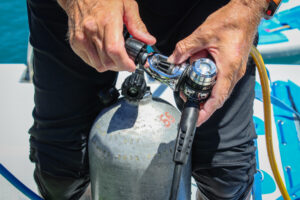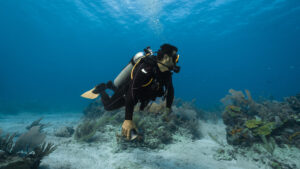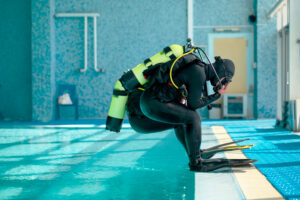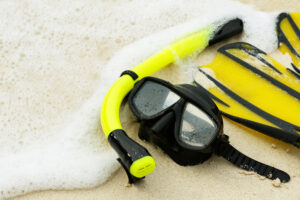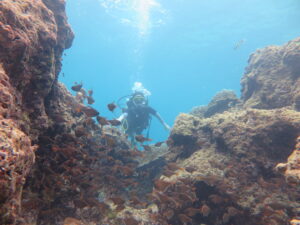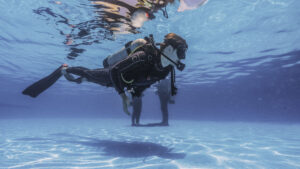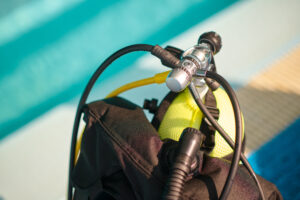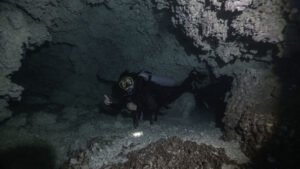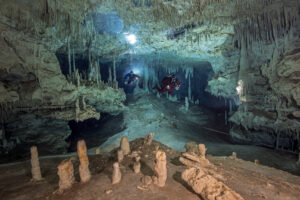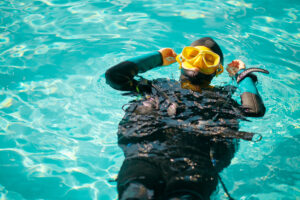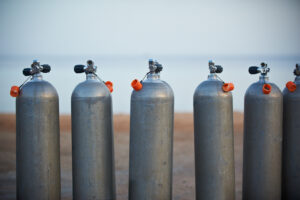Entry Title: Reserve Gas in Scuba Diving
Definition and Function
Reserve Gas, a term of paramount importance in the world of scuba diving, refers to a portion of gas supply that a diver sets aside exclusively for emergency situations. It is an integral part of the diving planning and execution process. This reserve is not meant to be consumed during the ordinary course of a dive; rather, it serves as a safety net, providing divers with a potentially life-saving resource in case of unexpected circumstances underwater.
Importance and Safety
The concept of reserve gas is rooted in the principles of safety and preparedness. Diving, while an exhilarating experience, can pose risks. Equipment malfunctions, unexpected changes in underwater currents, sudden health issues, and unforeseen extended dive times are just some of the scenarios where having a reserve gas supply can make a significant difference. Reserve gas is essentially a contingency plan, a critical component in ensuring that divers can safely return to the surface in case of emergencies.
Calculating Reserve Gas
Determining the amount of reserve gas needed for a dive depends on several factors, including the depth and duration of the dive, the diver’s breathing rate, the type of dive (recreational, technical, etc.), and specific environmental conditions. Generally, the rule of thirds is applied in recreational diving, where one-third of the total gas supply is allocated for the descent and exploration, one-third for the return journey, and the final third serving as the reserve. In technical and cave diving, a more conservative rule of halves may be applied.
Equipment
Reserve gas is typically stored in the main dive cylinder, although in more advanced dive planning or technical diving scenarios, it may be stored in separate, independent tanks known as pony bottles or bailout cylinders. These independent systems provide an additional layer of safety, particularly in situations where the primary gas supply might be compromised.
Training and Best Practices
Proper training and adherence to best practices are crucial for effective use of reserve gas. Divers should be well-versed in monitoring their gas supply, understanding their gas consumption rate, and knowing how and when to access their reserve gas in an emergency. It’s vital to always plan dives with the reserve gas in mind and never to encroach on it during a routine dive.
Implications and Considerations
Reserve gas planning is not an isolated process but should be integrated with other safety measures and dive planning procedures. It’s a key aspect of gas management, alongside other considerations such as gas mix (for dives requiring enriched air or trimix), decompression obligations, and surface support arrangements.
Moreover, diving with a reserve gas supply instills a safety mindset, encouraging divers to think proactively about potential risks and their mitigation strategies. This approach not only enhances the safety profile of dives but also enables divers to enjoy their underwater adventures with greater peace of mind.
In Summary
Reserve gas, the emergency stash of breathable air held back for contingencies, is a cornerstone of safe diving practices. Its management requires careful planning, understanding of personal consumption rates, and appropriate training. As part of a comprehensive approach to dive safety, the effective use of reserve gas can help ensure that divers are prepared to handle unexpected situations, reinforcing the importance of safety and preparedness in the captivating yet unpredictable underwater environment.


